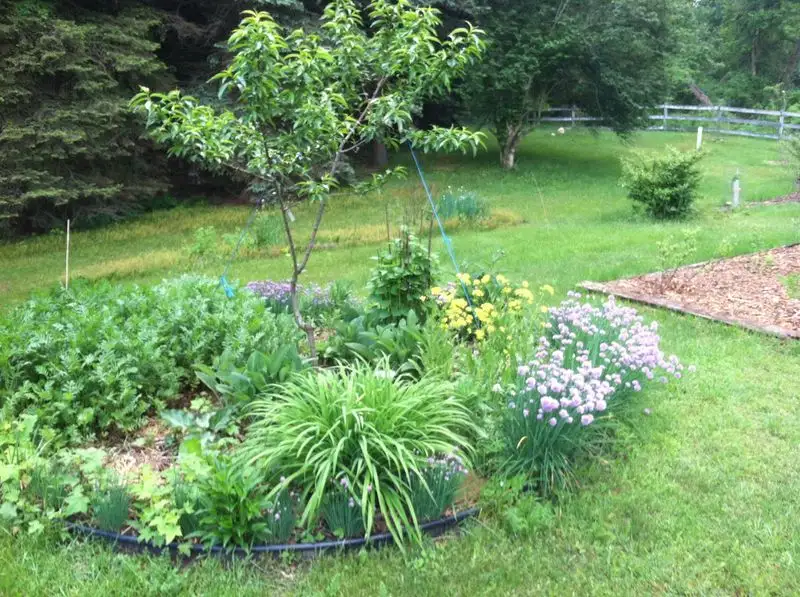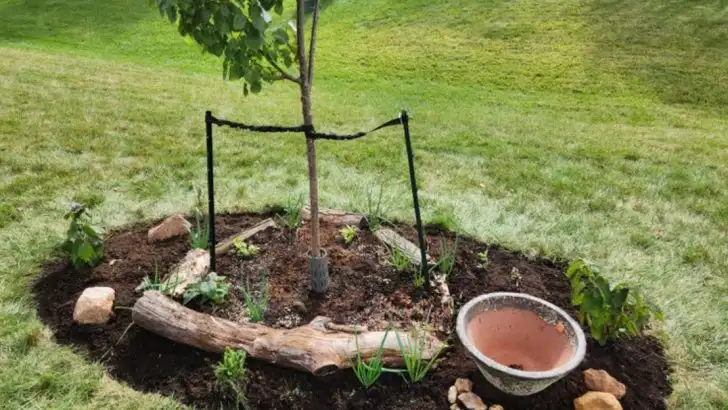I used to spend hours building and maintaining raised beds, hauling soil and planning crop rotations. Then I discovered plant guilds—natural communities of plants that work together, just like in a forest—and everything changed.
By grouping mutually supportive species (like deep-rooters, nitrogen-fixers, and living mulch), I created self-sustaining garden patches that feed the soil, deter pests, and regulate water without constant intervention. These guilds now grow where my raised beds used to be—and with far less effort.
In this article, I’ll show you how to design and plant your own low-maintenance, resilient garden systems using guild principles—so your plants can take care of each other, and your garden can almost run itself.
The Companion Trio

Imagine a garden trio where basil, tomatoes, and marigolds unite in harmony. Basil’s fragrant leaves deter pests, tomatoes offer shade, and marigolds add vibrant color while warding off nematodes. Together, they create a mini-ecosystem that thrives without chemical interventions. This trio not only beautifies your garden but also boosts productivity. Why settle for monoculture when you can enjoy this symbiotic relationship? This approach lets nature take the lead, resulting in tastier tomatoes and a healthier garden. The magic of this trio lies in its simplicity and effectiveness.
Pollinator’s Paradise

Creating a haven for pollinators transforms your garden into a bustling ecosystem. Sunflowers, lavender, and borage work together to invite bees and butterflies. Lavender’s calming scent, paired with borage’s edible flowers, offers a feast for pollinators and humans alike. Sunflowers, standing tall, provide shelter and seeds. Integrating these plants cultivates an environment where pollinators thrive, ensuring your garden flourishes. This diversity in your garden sets the stage for sustainable growth and abundant harvests, solidifying the vital role of pollinators. Embrace the buzz and color they bring.
The Nutrient Recyclers

Imagine a team of unsung heroes working beneath the soil. Comfrey, clover, and yarrow excel in recycling nutrients. Comfrey’s deep roots pull nutrients from the subsoil, while clover fixes nitrogen, and yarrow improves soil structure. This combination reduces the need for artificial fertilizers, providing a natural boost to your plants. These recyclers enhance soil health, creating a robust foundation for other plant guilds. Allowing these plants to flourish supports a dynamic and self-sustaining garden. Their hidden work ensures long-term vitality, proving that not all heroes wear capes.
The Pest Patrol

What if your plants could defend themselves? Garlic, chives, and nasturtium are the garden’s own security team. Garlic’s strong scent repels insects, chives deter pests, and nasturtium acts as a trap crop. This natural defense system minimizes the need for chemicals. These plants not only protect but also add beauty and flavor to your garden. Incorporating them into your guild ensures the protection of more vulnerable crops. The Pest Patrol illustrates the power of plant synergy and creativity, proving that nature offers its solutions. Let your garden flourish under their watchful eyes.
The Soil Builders

Building soil health is foundational to a productive garden. Legumes, alfalfa, and buckwheat serve as soil builders. Legumes fix nitrogen, enriching the soil, while alfalfa’s deep roots aerate and improve drainage. Buckwheat acts as a cover crop, preventing erosion. These plants contribute to a fertile environment, fostering robust plant growth. In time, this guild enhances the garden’s resilience, reducing dependency on commercial soil amendments. By nurturing the soil, you lay the groundwork for a thriving ecosystem. The benefits are layered and lasting, cultivating a garden that stands the test of time.

